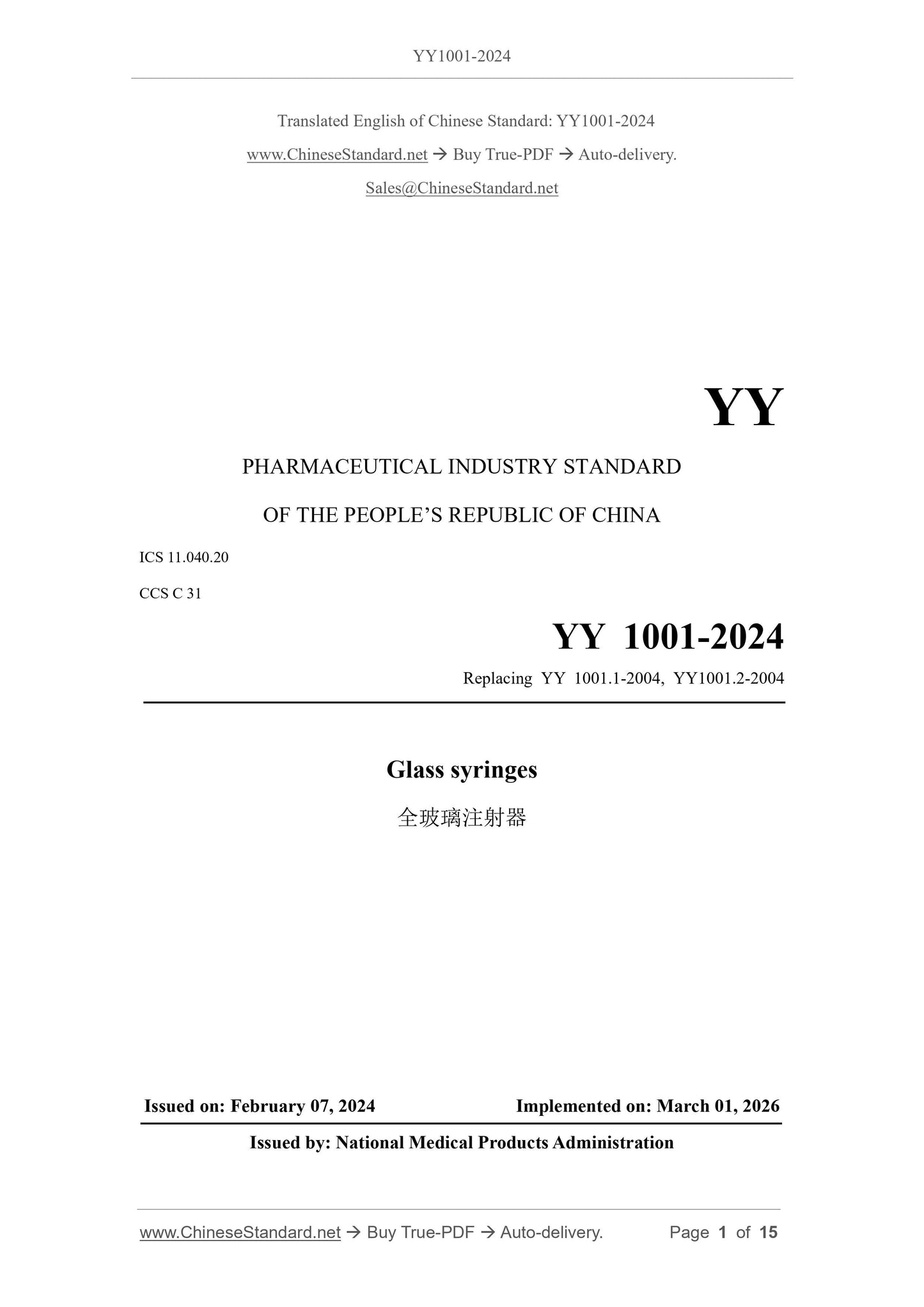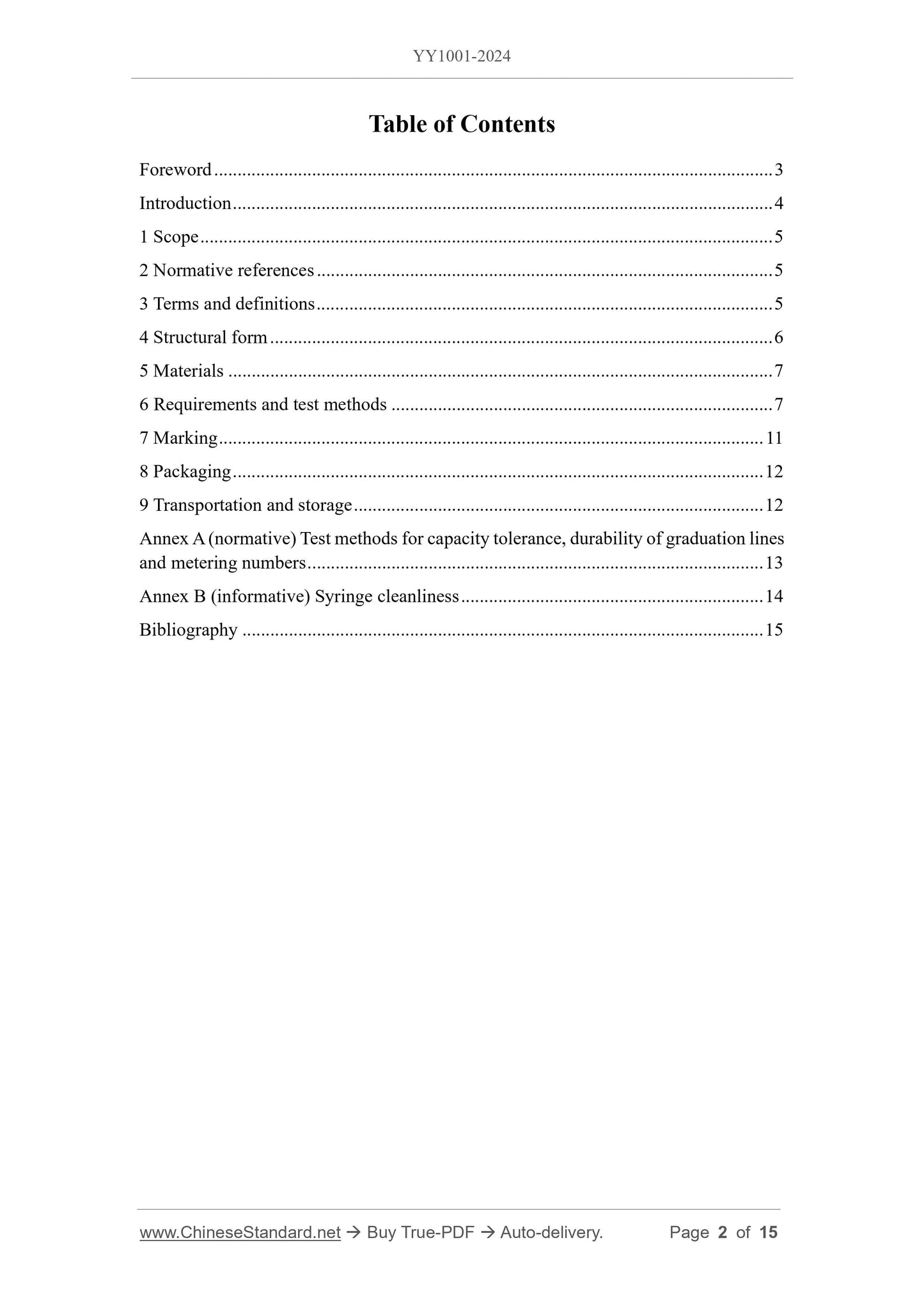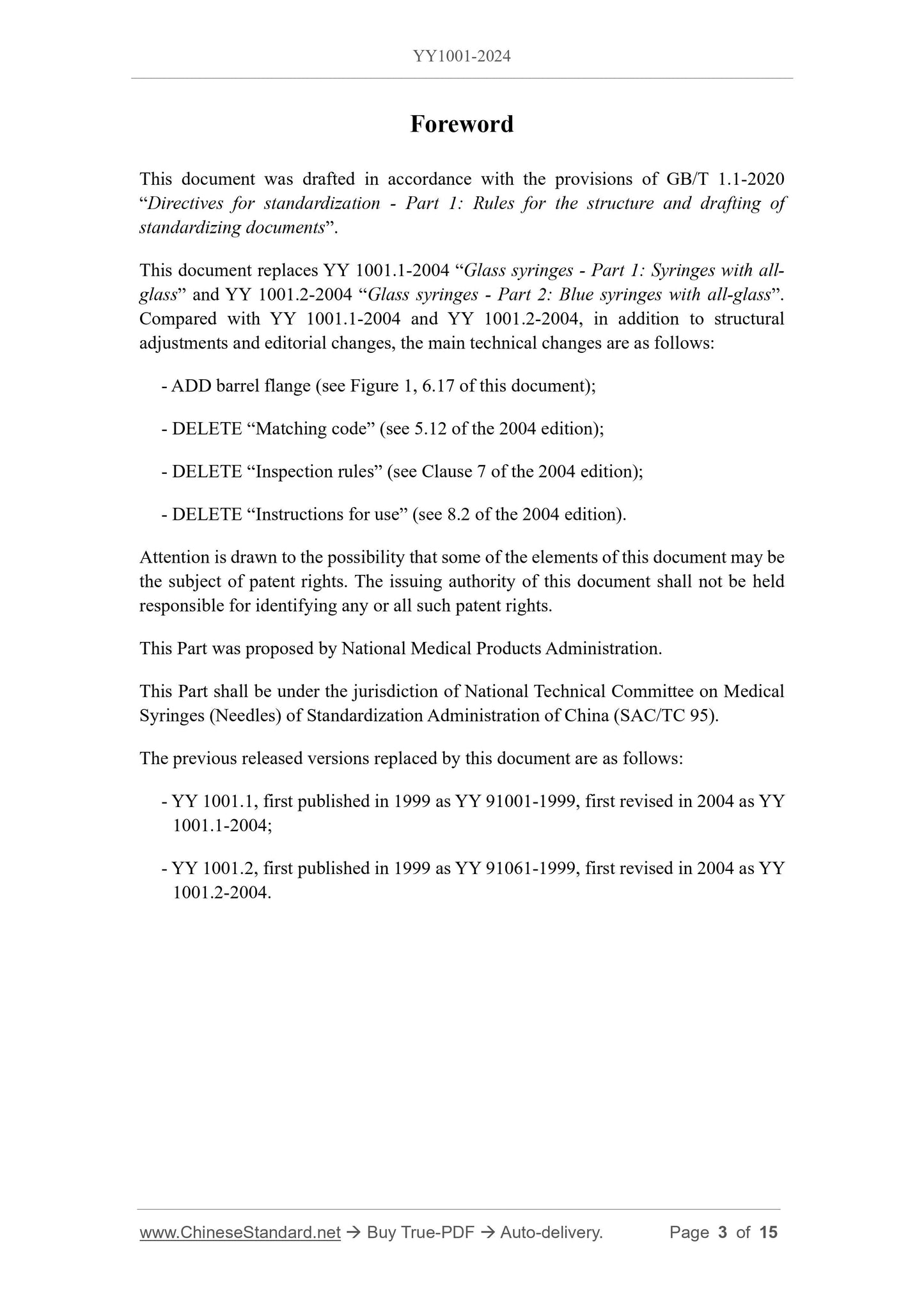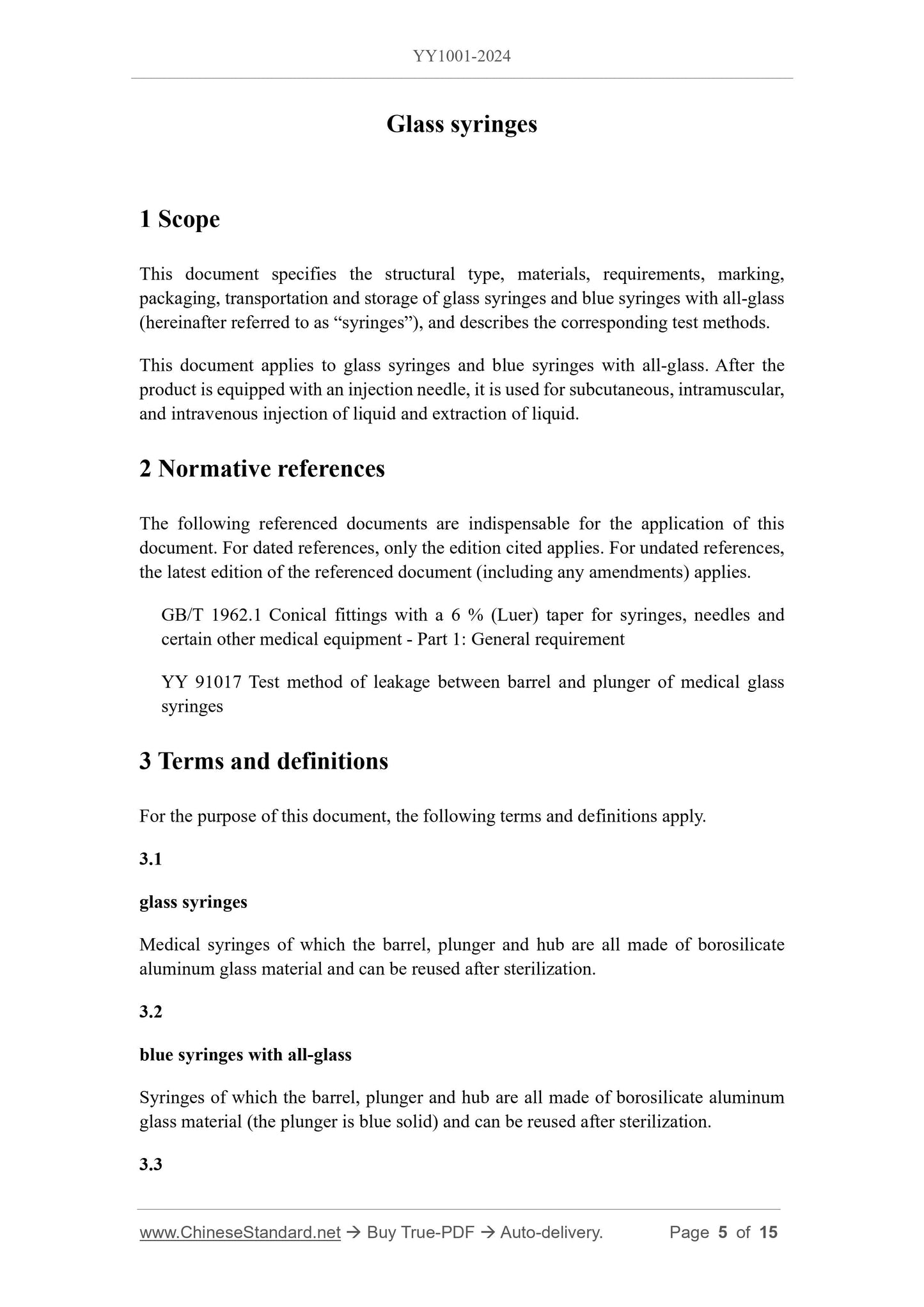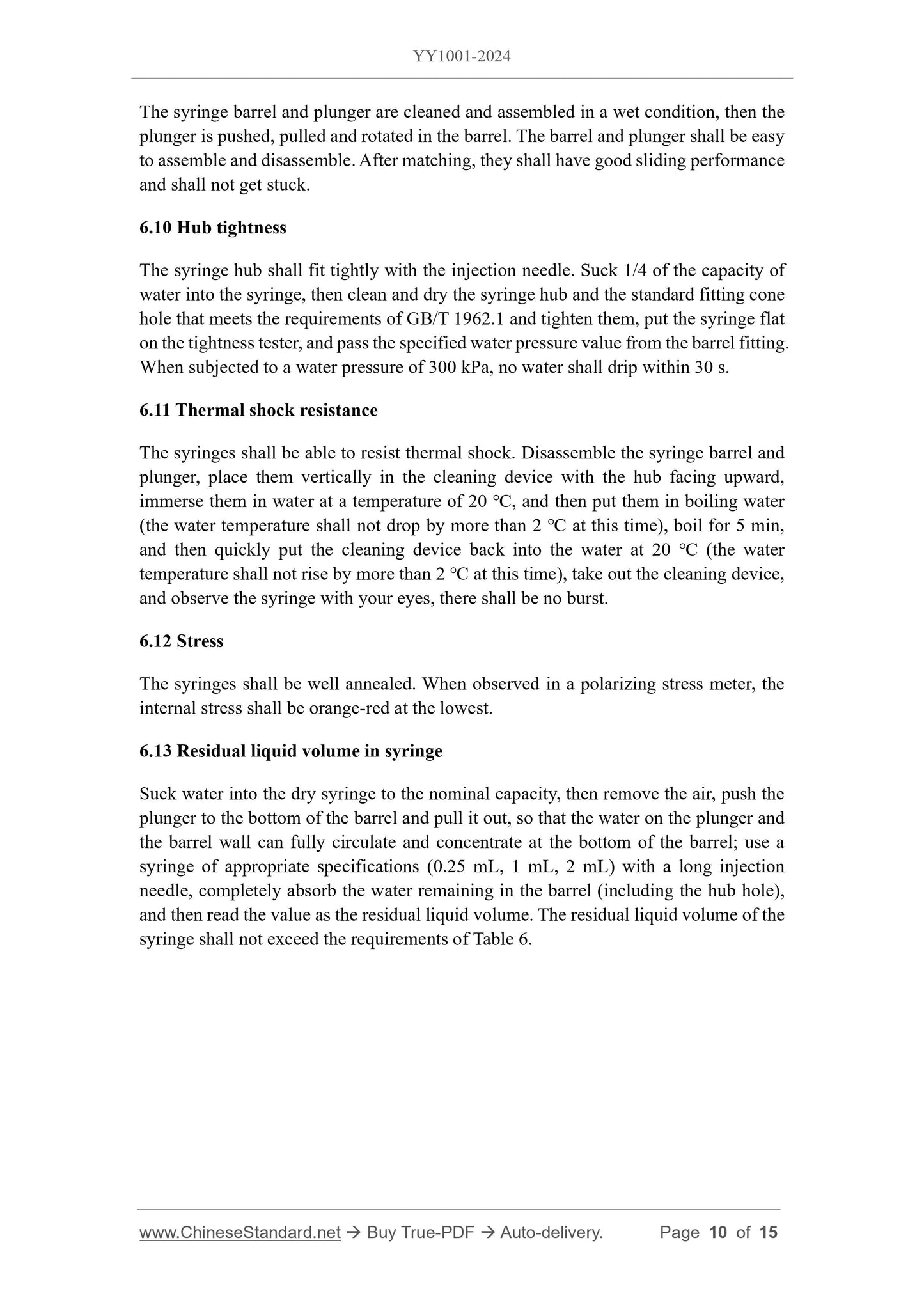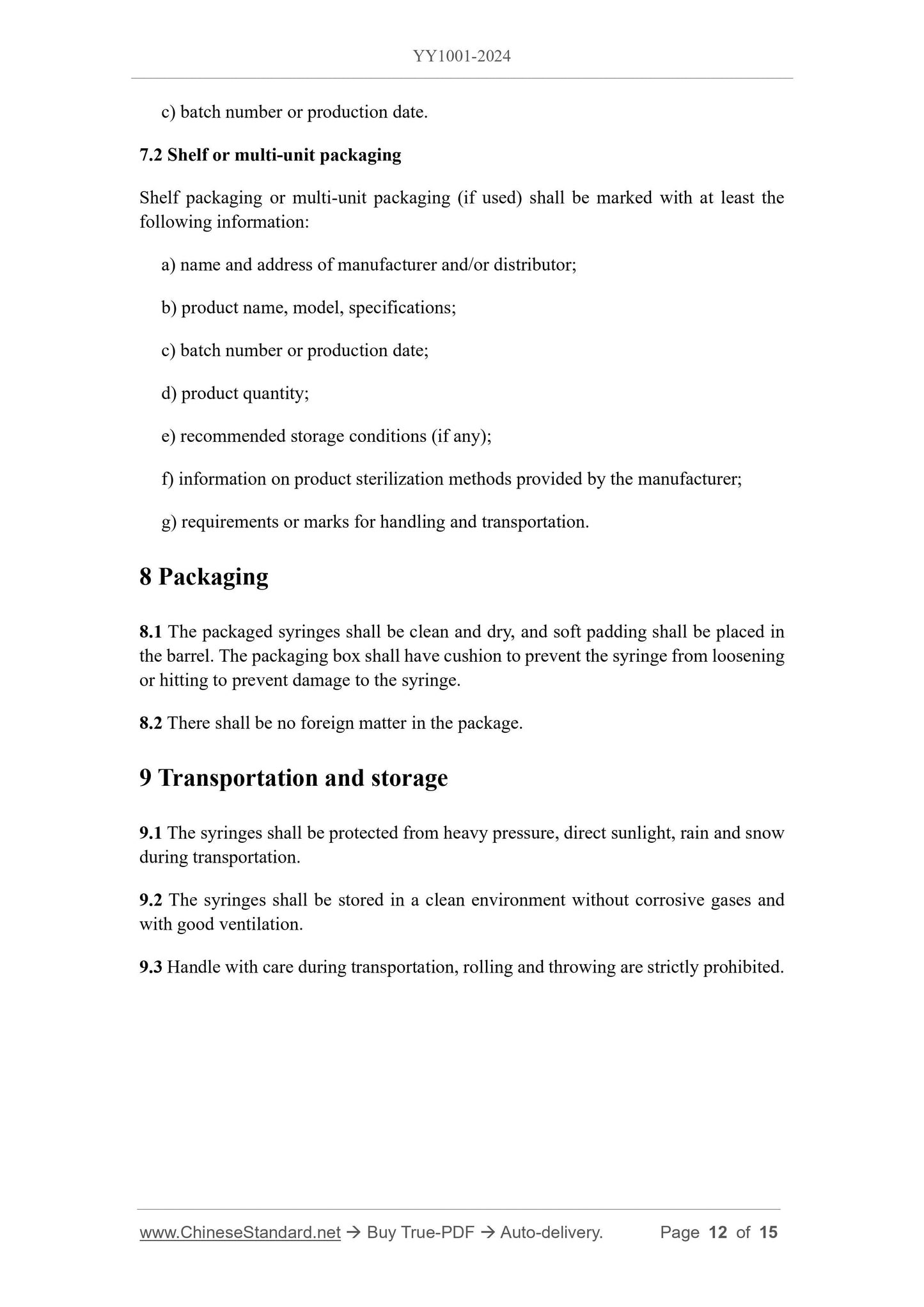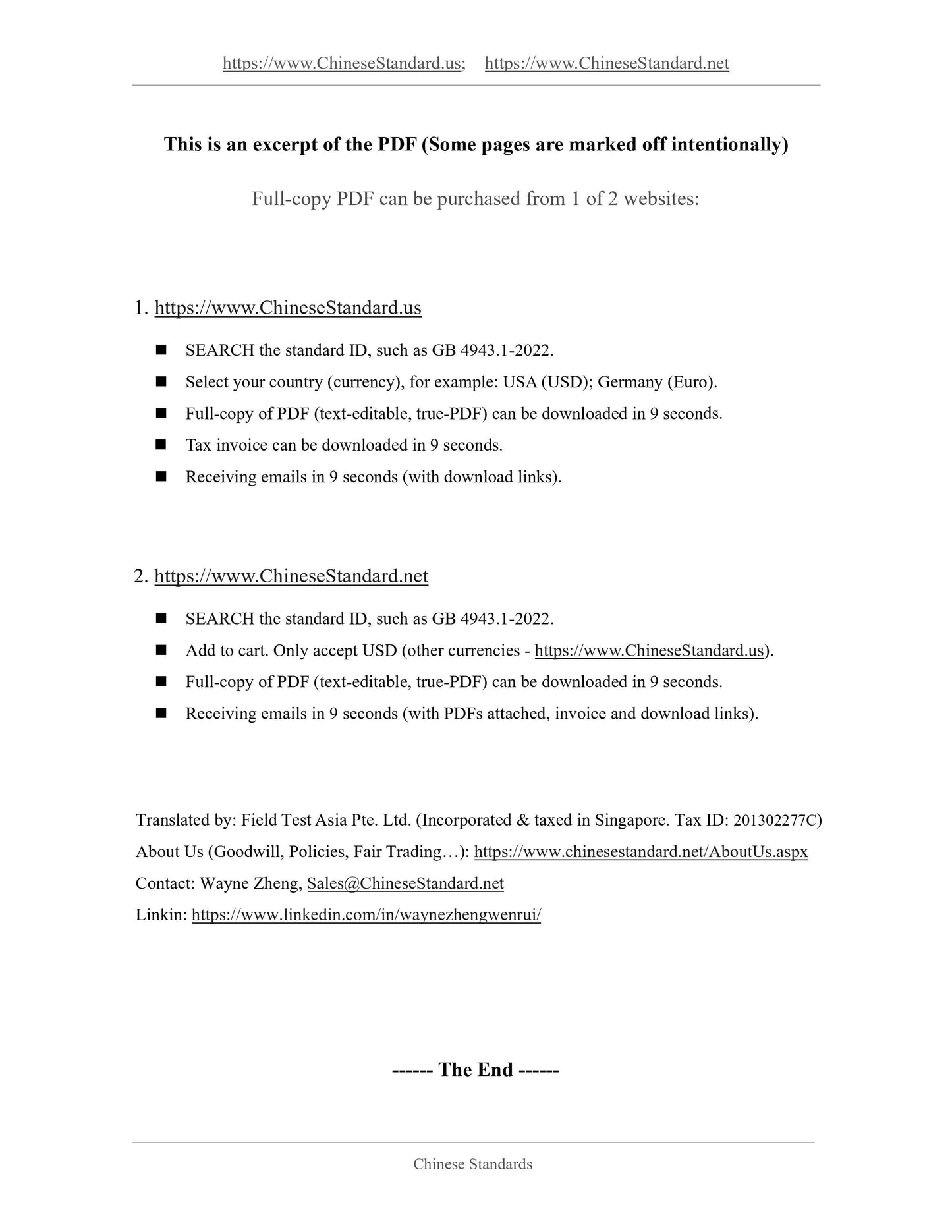1
/
of
7
www.ChineseStandard.us -- Field Test Asia Pte. Ltd.
YY 1001-2024 English PDF
YY 1001-2024 English PDF
Regular price
$230.00
Regular price
Sale price
$230.00
Unit price
/
per
Shipping calculated at checkout.
Couldn't load pickup availability
YY 1001-2024: Glass syringes
Delivery: 9 seconds. Download (and Email) true-PDF + Invoice.Get Quotation: Click YY 1001-2024 (Self-service in 1-minute)
Newer / historical versions: YY 1001-2024
Preview True-PDF
Scope
This document specifies the structural type, materials, requirements, marking,packaging, transportation and storage of glass syringes and blue syringes with all-glass
(hereinafter referred to as “syringes”), and describes the corresponding test methods.
This document applies to glass syringes and blue syringes with all-glass. After the
product is equipped with an injection needle, it is used for subcutaneous, intramuscular,
and intravenous injection of liquid and extraction of liquid.
Basic Data
| Standard ID | YY 1001-2024 (YY1001-2024) |
| Description (Translated English) | Glass syringes |
| Sector / Industry | Medical Device and Pharmaceutical Industry Standard |
| Classification of Chinese Standard | C31 |
| Classification of International Standard | 11.040.20 |
| Word Count Estimation | 15,126 |
| Date of Issue | 2024-02-07 |
| Date of Implementation | 2026-03-01 |
| Older Standard (superseded by this standard) | YY 1001.1-2004; YY 1001.2-2004 |
| Issuing agency(ies) | State Drug Administration |
| Summary | This standard specifies the structural type, materials, requirements, marking, packaging, transportation and storage of all-glass syringes and blue core all-glass syringes, and describes the corresponding test methods. This document applies to all-glass syringes and blue-core all-glass syringes. After the injection needle is installed on this product, it can be used for subcutaneous, intramuscular, and intravenous injection of medicinal liquids and extraction of liquids. |
Share
